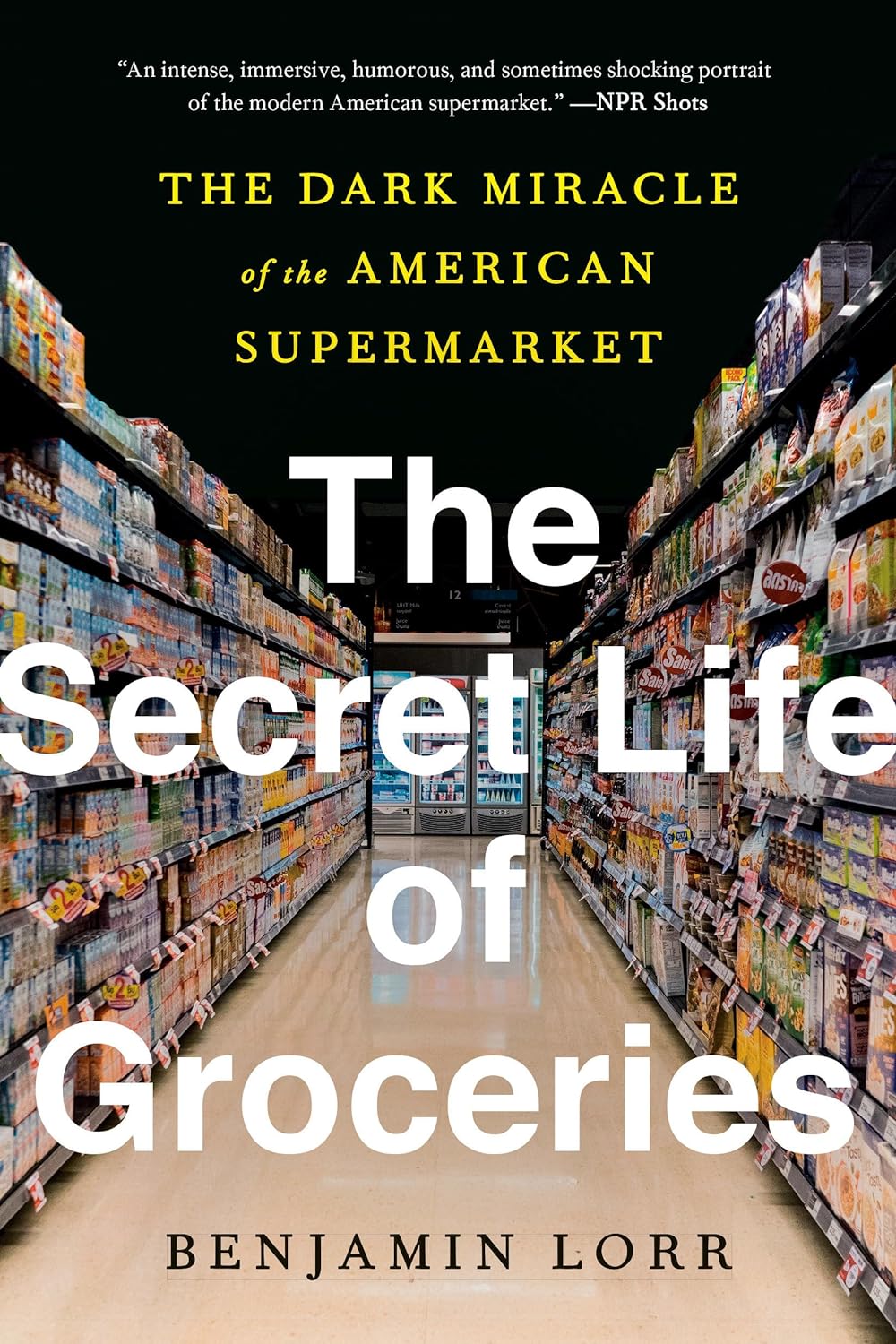 I ran across the book on an Atlantic article about “Summer Reads,” I believe. Subtitled “The Dark Miracle of the American Supermarket,” it sounded like a book I’d enjoy.
I ran across the book on an Atlantic article about “Summer Reads,” I believe. Subtitled “The Dark Miracle of the American Supermarket,” it sounded like a book I’d enjoy.
Our library had it, so I checked it out and pounded through it pretty quickly – it is a summer book, after all.
Published in 2021 after what I can glean years of investigation, the book is a testament to the American grocery store, from General Stores through the first supermarkets to the brave new world of both big box grocers (think Walmart and Costco) and online grocers (think Amazon and – again – Walmart).
The thread that runs through the entire book is two-fold:
- How margins on groceries are incredibly thin. The figure repeated was ~1.5%.
- How the abundance of product – accompanying lower costs – has been a staple for the arc of American grocery stores.
The book is divided into eight sections: Prologue, six main Parts, and an afterword.
Each of the Parts primarily focus on an individual/store – a humanizing element that helps tell about the bigger picture. For example, the Part on logistics (dry!) is about the author’s month-long ride-along with a long-haul trucker and what her (the driver’s) life was like, and how we depend on truckers for everything, not just groceries.
Chock full of insights and anecdotes, the first tour Parts move along quickly.
The last two Parts, however, are more of a slough, simply because of the subject matter:: sourcing ethics and how human slavery is endemic in a lot of food industries (coffee, coco, shrimp), even if only at the edges. One should not overlook “just a little” slavery.
The Part on ethics – organic food, free-range chickens, ethically sourced [whatever] – was interesting. The author concludes that, at the end of the day, grocery stores try to emphasize these often empty platitudes not to increase sales or – god forbid – do the right thing, but to make us, the consumer, feel a little bit better about ourselves. Cynical, but it feels accurate.
All in all, a fun read with a lot of obtuse (but fun) detail. It’s a relatively short book – approximately 280 pages – and there are some glaring omissions: Delivery and or order online/pickup in store are not mentioned that I recall. No mention of Peapod, which is odd (it does mention online grocers, specifically Amazon).
No mention of the trend toward self-checkout in stores, nothing about loyalty cards/programs or online apps. Not a peep about how liquor has changed grocers (has it? I know my local chain is putting in fancy, dedicated wine rooms. Why?).
But supermarkets have a huge story to tell; one book simply can’t fit everything in. I get that.
I’ll leave the reader with the centerpiece of Part III, about how to get a product into a store (legally, with bribes, pay for display…), cost of shelf space, how a buyer decides what to buy etc.
One word: Slawsa.
Google it. It’s a thing.
